Mysterious pulsar 1,630 light-years from Earth is sending infrared radiation across the galaxy
Pure infrared radiation from the spinning core of a collapsed star has been observed by scientists for the first time, claim the authors of a new study.
The neutron star, which is 1,630 light-years from Earth, can be found in the 'Magnificent Seven' cluster of pulsars.
Neutron stars are the collapsed, burnt-out cores of dead stars. Pulsars are essentially rotating, highly magnetised versions of these stars - left behind after a supernova explosion.
Radiation emissions from pulsars have been observed before, usually in X-ray and radio form, as these are the wavelengths which are typically the strongest.
Experts say this is the first time a pulsar has been found that only emits infrared wavelengths. Explaining the findings could change physicists' understanding of how neutron stars form and evolve.
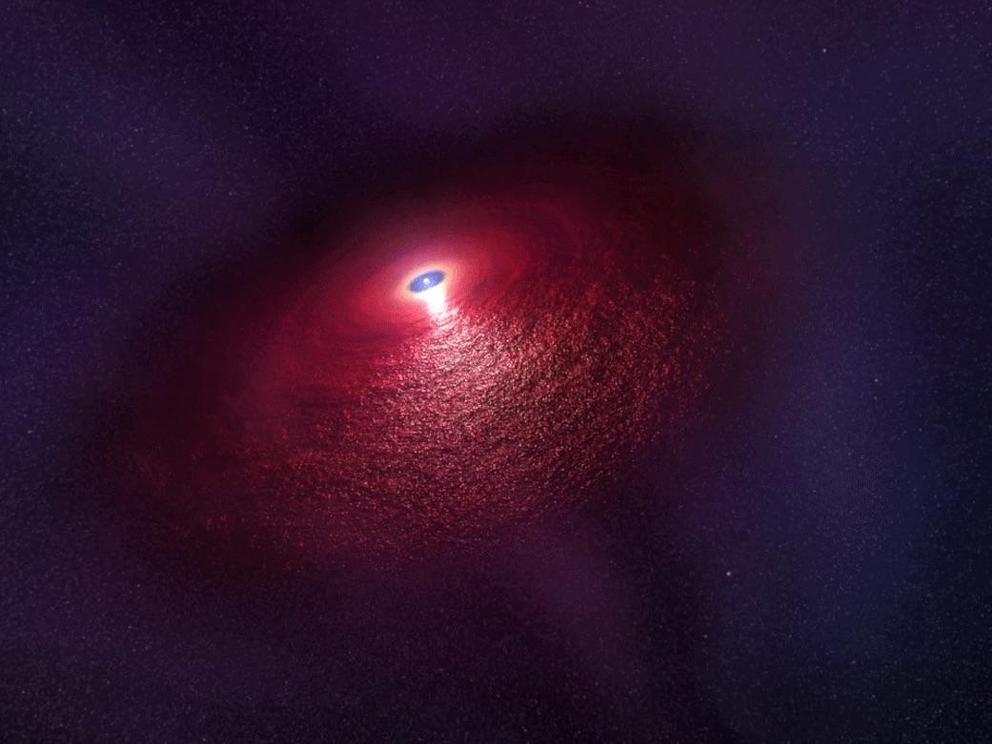
Pure infrared radiation from the spinning core of a collapsed star has been observed by scientists for the first time. One explanation is is that there is a disk of material, possibly mostly dust, surrounding the pulsar, slowing its rotation and heating it (Artist's Impression Provided By Penn State)
Astronomers from Penn State university were part of a team that made the finding using Nasa's Hubble Space Telescope, who suggest two possibilities to explain their observations.
The first is that there is a disk of material, believed to be primarily dust, surrounding the pulsar.
This ‘fallback disk’ of material would have gathered around the neutron star after the supernova explosion and would be composed of material leftover from the dead star.
Its interaction with the neutron star could have heated the pulsar and slowed its rotation, with the subsequent heat given off as infrared waves, scientists say.

Astronomers from Penn State university were part of a team that made the finding using Nasa's Hubble Space Telescope, This is an infrared image of the neutron star. The blue circle indicates the pulsar's X-ray position, obtained with the Chandra X-ray Space Telescope, the cross marks the position of the pulsar in the UV-Optical measured with the Hubble Space Telescope
The second possible explanation for the extended infrared emission from this neutron star is a 'pulsar wind nebula.'
A pulsar wind can be produced when particles are accelerated in the electric field that is produced by the fast rotation of a neutron star with a strong magnetic field.
As the neutron star travels through space at greater than the speed of sound, a shockwave can form where space and the pulsar wind interact.
Shocked particles would then cause the extended infrared emissions that have been observed, experts suggest.
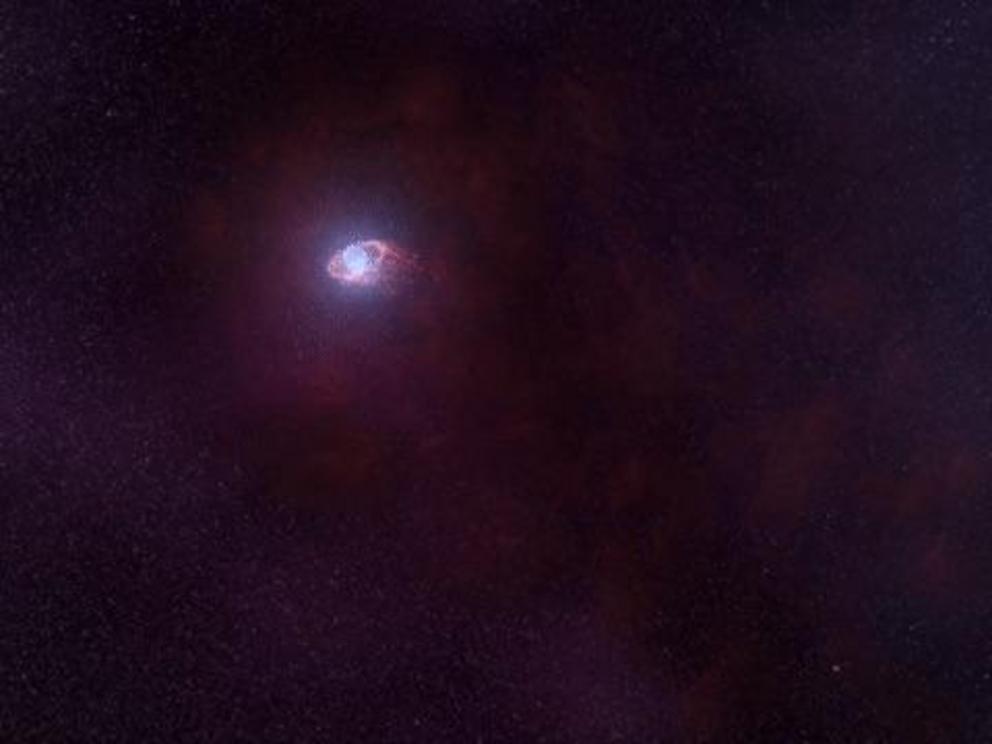
A second explamation involves a phenomenon called a pulsar wind (artist's impression), produced in the electric field of a spinning neutron star. As the neutron star travels through space at greater than the speed of sound, a shock can form where space and the pulsar wind interact
WHAT ARE PULSARS?
Pulsars are essentially rotating, highly magnetised neutron stars.
These stars are made of matter much more densely packed than normal and which give the entire star a density comparable to an atomic nucleus.
The diameter of our sun would shrink to less than 18 miles if it was that dense.
These neutron stars also have extremely strong magnetic fields which accelerate charged particles.
These give off radiation in a cone shaped beam which sweep across the sky like the light from a lighthouse as the star rotates.
When the beam sweeps over earth, it becomes visible as a pulsar, producing light that cycles every few seconds to just a few milliseconds.
Their rotational period is so stable that some astronomers use it to calibrate instruments and have proposed using it to synchronise clocks.
British astronomer Dame Jocelyn Bell Burnell was the first person to discover a pulsar in 1967 when she spotted a radio pulsar.
Since then other types of pulsars that emit x-rays and gamma rays have also been spotted.
'This particular neutron star belongs to a group of seven nearby X-ray pulsars – nicknamed "the Magnificent Seven" – that are hotter than they ought to be considering their ages and available energy reservoir provided by the loss of rotation energy,' said Bettina Posselt, associate research professor of astronomy and astrophysics and the lead author of the paper.
'We observed an extended area of infrared emissions around this neutron star – named RX J0806.4-4123 – the total size of which translates into about 200 astronomical units, or 2.5 times the orbit of Pluto around the Sun – at the assumed distance of the pulsar.'
Although neutron stars are generally studied in radio and high-energy emissions, such as X-rays, this study demonstrates that new and interesting information about neutron stars can also be gained by studying them in the infrared.
Using the new Nasa James Webb Space Telescope, due to launch in 2021, astronomers will be able to further explore this newly opened discovery space in the infrared to better understand neutron star evolution.
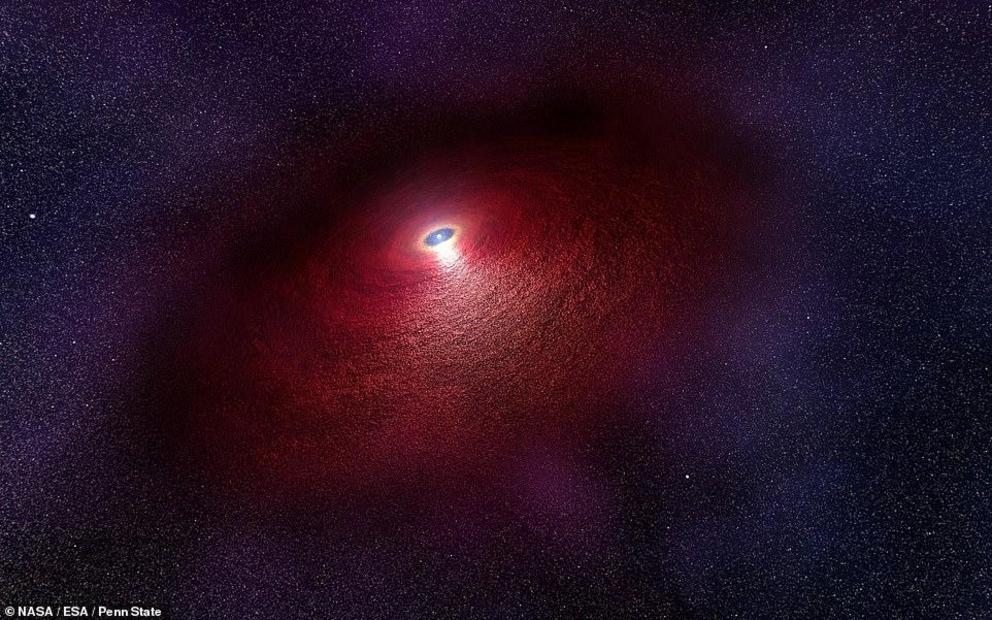
Although neutron stars are generally studied in radio and high-energy emissions, such as X-rays, this study demonstrates that new and interesting information about neutron stars can also be gained by studying them in the infrared. Artist's impression of the spinning disk theory
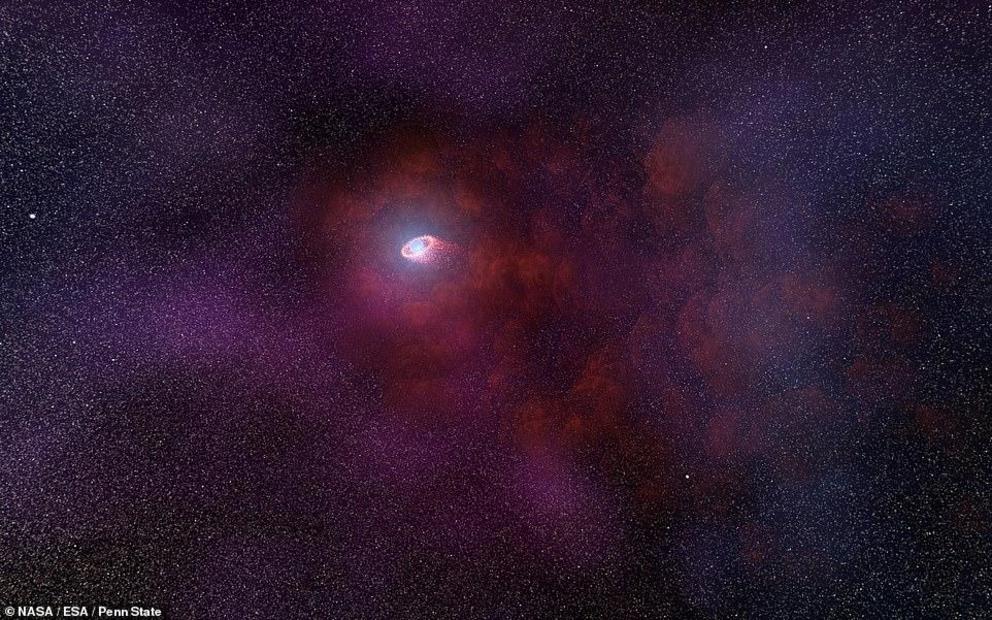
Using the new Nasa James Webb Space Telescope, due to launch in 2021, astronomers will be able to further explore this newly opened discovery space in the infrared to better understand neutron star evolution. This is an illustration of the pulsar wind nebula theory in action

Pictured is the Hubble Space Telescope, photographed during a Servicing Mission 4 crewmember just after the Space Shuttle Atlantis captured Hubble with its robotic arm on May 13, 2009, beginning the mission to upgrade and repair the telescope. Experts from Penn State were able to observe the pulsar 1,630 light-years from Earth using data from the Hubble
WHAT ARE NEUTRON STARS?
Neutron stars are the collapsed, burnt-out cores of dead stars.
When large stars reach the end of their lives, their core will collapse, blowing off the outer layers of the star.
This leaves an extremely dense object known as a neutron star, which squashes more mass than is contained in the sun into the size of a city.
A neutron star typically would have a mass that's perhaps half-a-million times the mass of the Earth, but they're only about 20 kilometres (12 miles) across.
A handful of material from this star would weigh as much as Mount Everest.
They are very hot, perhaps a million degrees, highly radioactive, and have incredibly intense magnetic fields.
This makes them arguably the most hostile environments in the Universe today, according to Professor Patrick Sutton, head of Cardiff University's gravitational physics department.
The dense objects, in particular their cores, are key to our understanding of the universe's heavy elements.
'One theory is that there could be what is known as a "fallback disk" of material that coalesced around the neutron star after the supernova,' she added.
'Such a disk would be composed of matter from the progenitor massive star.
'Its subsequent interaction with the neutron star could have heated the pulsar and slowed its rotation.
'If confirmed as a supernova fallback disk, this result could change our general understanding of neutron star evolution.
'A pulsar wind nebula would require that the neutron star exhibits a pulsar wind.
'Typically, pulsar wind nebulae are seen in X-rays and an infrared-only pulsar wind nebula would be very unusual and exciting.'
The full findings of the study were published in The Astrophysical Journal.
WHAT IS A SUPERNOVA AND HOW DOES IT FORM?
A supernova occurs when a star explodes, shooting debris and particles into space.
A supernova burns for only a short period of time, but it can tell scientists a lot about how the universe began.
One kind of supernova has shown scientists that we live in an expanding universe, one that is growing at an ever increasing rate.
Scientists have also determined that supernovas play a key role in distributing elements throughout the universe.
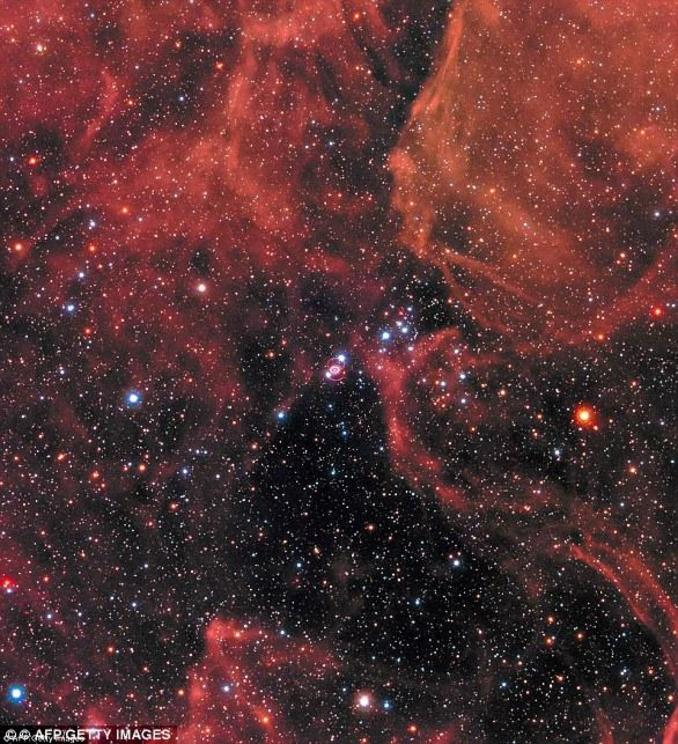
In 1987, astronomers spotted a ‘titanic supernova’ in a nearby galaxy blazing with the power of over 100 million suns (pictured)
There are two known types of supernova.
The first type occurs in binary star systems when one of the two stars, a carbon-oxygen white dwarf, steals matter from its companion star.
Eventually, the white dwarf accumulates too much matter, causing the star to explode, resulting in a supernova.
The second type of supernova occurs at the end of a single star's lifetime.
As the star runs out of nuclear fuel, some of its mass flows into its core.
Eventually, the core is so heavy it can't stand its own gravitational force and the core collapses, resulting in another giant explosion.
Many elements found on Earth are made in the core of stars and these elements travel on to form new stars, planets and everything else in the universe.
Video can be accessed at source link below.
